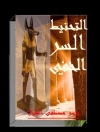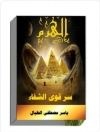‘… I have sailed the seas and come
To the holy city of Byzantium.’
W. B. Yeats
From the foundation of Constantinople in 330 to its fall in 1453, this brief history explores the key components of Byzantine Christianity, including the development of monasticism, icons and iconoclasm, the role of the emperor in relation to church councils and beliefs, the difficult relationship with the papacy and the impact of the Crusades.
The book also considers Byzantine Christianity as a living force today: the variety and vitality of Orthodox churches, the role of the Church in Russia and the enduring relevance of a spirituality derived from the church fathers.
Table des matières
Preface xiii
Chronology xv
Part 1
THE HISTORY
1 What was Byzantium? 3
2 Monks, monasteries and bishops 11
3 The age of the Fathers 18
4 The eastern Church splits 25
5 Icons and iconoclasm 33
6 After iconoclasm 40
7 The Macedonian emperors 48
8 Byzantium under the Comneni 56
9 1204 and after 64
10 Byzantium 1261-1453 71
Part 2
THE LEGACY
11 Byzantium and Orthodox life and spirituality 81
12 The setting of worship 89
13 Discipline and control 97
14 Orthodox churches and others 103
15 Perspectives today 111
Conclusion 120
Glossary 122
Further reading 126
Index 131
A propos de l’auteur
Prof Dame Averil Cameron DBE, FBA, FSA, is a Research Fellow at Keble College, Oxford, a member of the Faculty of Classics and Chair of the Oxford Centre for Byzantine Research. She was Warden of Keble College, 1994-2010, and before that Professor of Late Antique and Byzantine History at King’s College London, where she was also the first Director of the Centre for Hellenic Studies. She is President of CBRL (Council for British Research in the Levant) and was President of FIEC (Fédération Internationale des Associations d’études Classiques), 2009-14.












